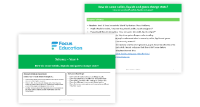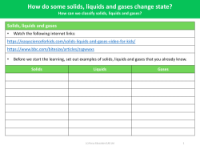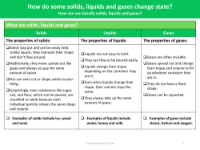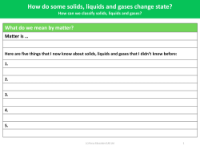How can we classify solids, liquids and gasses? - Teacher's Notes

Science Resource Description
In a lesson designed to explore the classification of matter, teachers are advised to start by reading 'A Drop Around the World' by Barbara Shaw McKinney to set the context for understanding the different states of matter. Pupils are then prompted to consider how they can classify solids, liquids, and gases, and are encouraged to explain how water can exist in all three states. A knowledge organiser is provided to assist pupils in gaining a more in-depth comprehension of these concepts. Before proceeding, it is crucial to ensure that all pupils have a clear understanding of what is meant by the terms solids, liquids, and gases.
The lesson progresses with a focus on the question, 'What do we mean by matter?'. Pupils are directed to use resources from two internet links alongside a provided chart to write down five new facts they have learned about solids, liquids, and gases. These resources are designed to enhance their knowledge and understanding of how these states can change from one to another and how they can be classified. The lesson aims to enrich the pupils' grasp of the fundamental properties of matter and the conditions under which state changes occur, laying the groundwork for more advanced scientific concepts.




